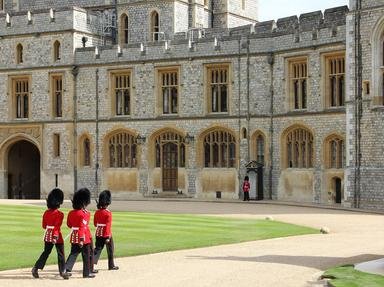Quiz Answer Key and Fun Facts
1. Robert II, the first Stewart King, died in which Scottish county?
2. James I was the first Stewart monarch to start his reign as a minor, a tradition which, due to various circumstances, carried on for over 100 years. Yet he began his reign as a captive of Henry IV of England. Who acted as his regent?
3. James I became an unpopular King after he tried to reform Scotland along similar lines to the English Court. He was murdered on 21st February 1437, but where did this sacrilegious act take place?
4. James II was only 10 years old when he bore witness to the horrific murders (ordered by his regents) of William Douglas, 6th Earl of Douglas and his younger brother at Edinburgh Castle. What has this bloody event of James' reign came to be known as?
5. Which University did James II establish in 1451?
6. James III, son of James II, married Margaret of Denmark in July 1469. He had three sons, two of whom were called James.
7. James III proved an unpopular King and his nobles took up arms against him. He was defeated and killed at the battle of Sauchieburn near Bannockburn on 11th June 1488. Where is he buried?
8. James IV was the last Scottish King to speak which language?
9. James declared war on England after it attacked France in 1513. He raised an army and invaded. Who then sent the English army north to meet James' army?
10. How was James V related to Henry VIII?
11. James V married Mary of Guise in 1538 and they had three children, but only one survived to take the throne when James died at which Royal palace?
12. Mary became Queen of Scots when she was not even a week old. Henry VIII sought her as a bride for his son but when the Scots refused his offer he sent an army north to burn Edinburgh. A period of intermittent war followed. What are these series of conflicts better known as?
13. Mary had a tragic reign. As a Catholic queen in a Protestant country, her job was never going to be easy and though she managed well at first it all came crashing down on her after she was accused of being involved in her husband, Lord Darnley's, murder. She was eventually forced to abdicate in favour of her one year old son, James. Where did she sign her abdication?
14. James VI was crowned at the Church of the Holy Rood in Stirling on 29th July 1567, five days after his mother abdicated. However his surname was not spelled Stewart, but Stuart.
15. James was given the nickname "The Wisest Fool in Christendom" but who was it that reputedly called him this?
Source: Author
ScottishGal
This quiz was reviewed by FunTrivia editor
bloomsby before going online.
Any errors found in FunTrivia content are routinely corrected through our feedback system.


